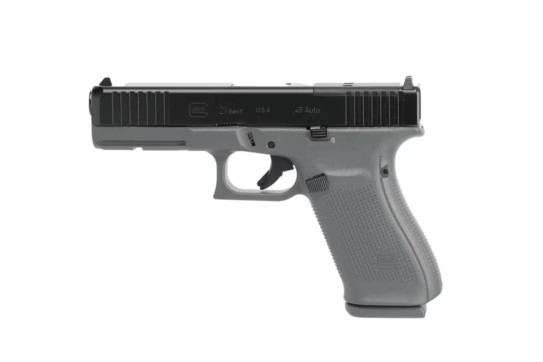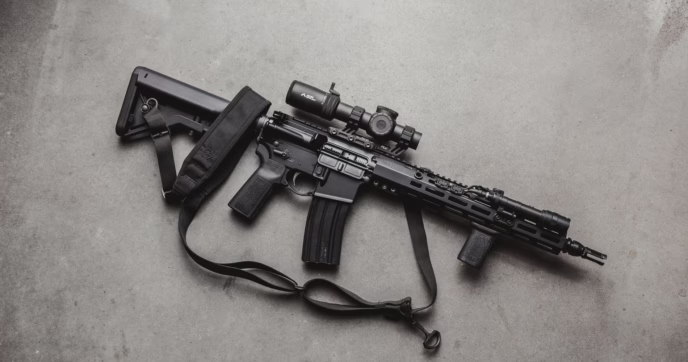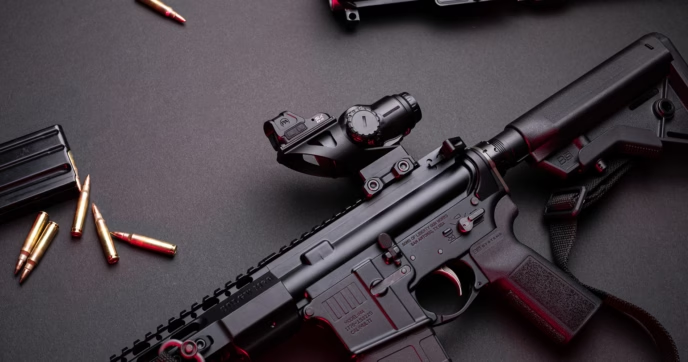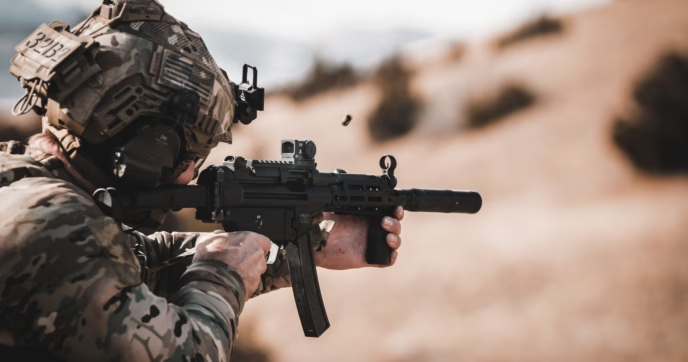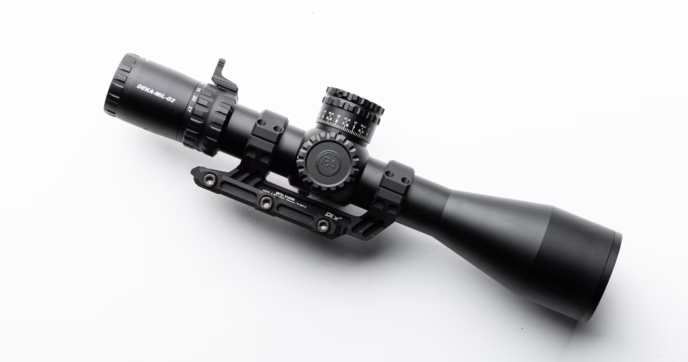Throughout history, iron sights were the most common form of aiming on handguns—a simple and reliable system, proven by time. But today, optics are available in a multitude of unique configurations, with red dot sights being widely considered by many as the new standard for pistols, one that offers even more versatility than more basic iron sights.
However, despite the many benefits reflex sights offer, iron sights aren’t totally obsolete. For many firearms, especially handguns, iron sights are still the standard sight option that most pistols come equipped with. And for many enthusiasts, they remain as the go-to back-up sight option.
As such, many enthusiasts who opt to use mini-reflex sights on their pistols ensure that they’re able to reliably cowitness with their iron sights. Depending on the pistol and optic though, doing this can be a challenge, as running optics typically means you’ll need to also upgrade your pistol’s iron sights for taller ones. But, doing so isn’t always necessary, as the right optic setup can allow you to effectively cowitness with standard irons.
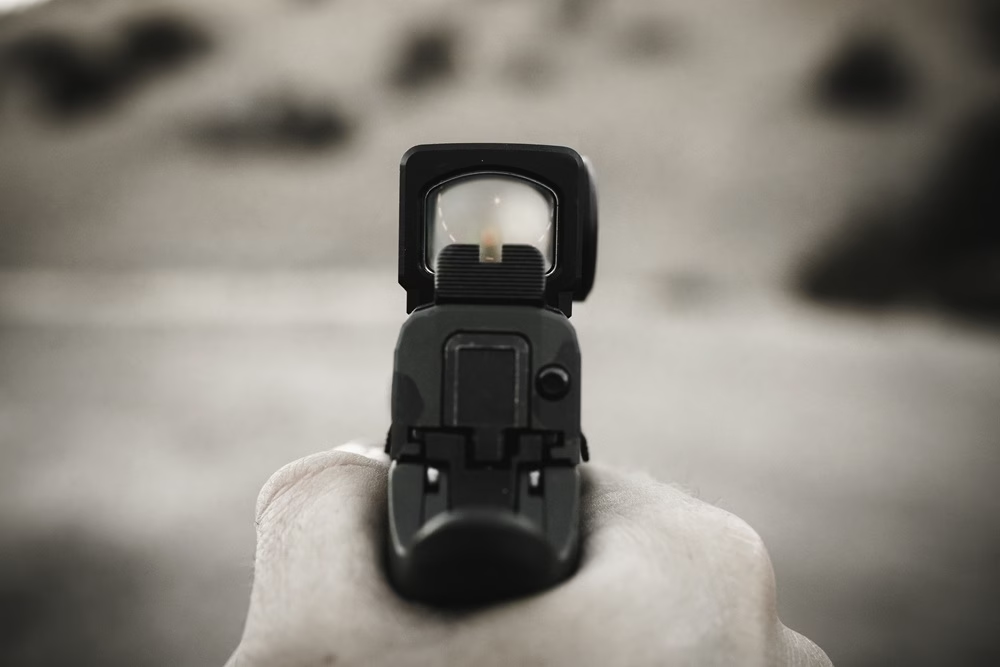
Cowitness: The Basics
Cowitness is a term used to describe the relationship between your reflex sight and your pistol’s iron sights—more specifically, it refers to your ability to see your pistol’s iron sights through your red dot sight picture. Depending on your setup, the position of your iron sights in relation to your reticle can appear quite different. You’ve likely heard the phrases, ‘absolute’ and “lower 1/3” used in relation to cowitness, and while these are two common cowitness heights, they’re really only achievable on rifles, not pistols.
To achieve an absolute cowitness, your iron sights need to align perfectly with your pistol red dot reticle, meaning if you were to line up your iron sights with the reflex sight turned on, the dot would line up with your sights with no issue. On handguns, this isn’t all that feasible, as it’s generally only achievable with suppressor height sights since stock iron sights have such a low height.
In contrast, a lower 1/3 cowitness is when your iron sights sit within the lower 1/3 of your reflex sight’s objective lens. With this optic height, the reticle will appear to hover just over the top of your iron sights, meaning you’ll need to either shift your head position down, or bring your pistol higher up to use your pistol’s iron sights. For pistols, a lower 1/3 cowitness is, again, not really feasible. Because of how low pistol irons sit, it’s difficult to achieve this cowitness height unless you run a specific red dot and iron sight combo.
Neither cowitness height is necessarily better than the other, as this is ultimately dependent on your personal preference. However, it’s important to recognize that neither one is necessarily possible when running optics on handguns. On handguns, you realistically only have the choice of having either no cowitness or something like a lower ¼ cowitness simply because of the difference in iron sight height. As such, your choice of optic and pistol are incredibly important.
Say, for instance, you’re running a pistol with an RMR cut slide but want to use an optic like an Aimpoint® ACRO, or some other optic with a different mounting footprint. In order to do so, you’d need to use one of your pistol’s red dot adapter plates to properly mount it, raising your optic’s overall height in the process. This can block your iron sights entirely, rendering them unusable, forcing you to opt for taller iron sights if you want to achieve a proper cowitness.
So, if your goal is to cowitness with your stock sights, you’ll need to ensure that your optic is capable of directly mounting to your slide.
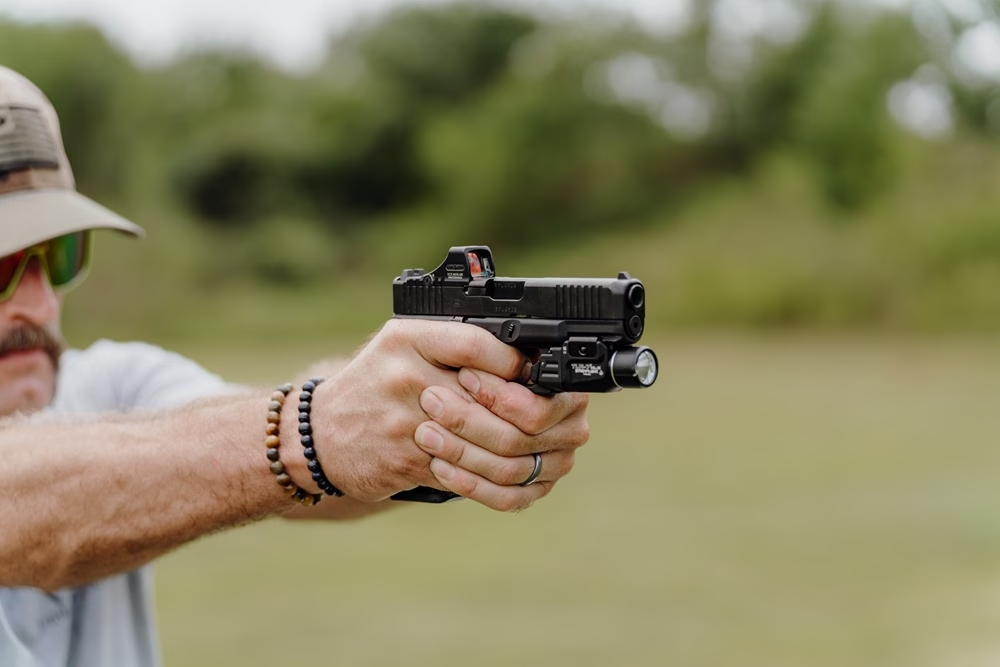
Red Dot Selection for Cowitnessing
Most modern handguns are available in an optic-ready configuration, but not all are designed the same. As we mentioned above, different optics use different mounting footprints. And in the same vein, different optic-ready pistol models have slides that are cut for different optics or have their own proprietary mounting systems.
Take GLOCK handguns for instance. Optic-ready GLOCK pistols make use of their Modular Optic System (MOS), making them compatible with nearly every mini-reflex sight, so long as you use the right MOS adapter plates. While a solid mounting system, you’re locked into using adapter plates, which is almost guaranteed to occlude your iron sights, unless you swap them out for taller ones. This is why optics like the Holosun SCS are cut specifically to fit MOS slide dimensions—since they bypass the need for an adapter plate, you can achieve a lower mount height. However, there aren’t many optics that are designed this way.
Most, if not all, optic-ready handguns use a proprietary mounting system. Whereas GLOCK pistols use their own GLOCK MOS system, other pistols like HK VP9 and Staccato P, for example, also use their own proprietary mounting system, which all require their own unique adapter plates for mounting optics. This significantly hinders your capabilities to mount an optic to your pistol and still be able to cowitness with your stock iron sights, but there are still ways to do so.
What Optic and Pistol Combo will Cowitness with Standard Irons?
Really, just about any pistol and optic combo can effectively cowitness with your pistol’s standard height irons so long as the slide and optic are compatible with each other. And while this seems impossible due to the many proprietary mounting systems, it’s more possible than you might think.
If you’re savvy in customizing your firearms, you’ll know that handguns, much like rifles, have an incredibly diverse and constantly expanding parts aftermarket. And included in this parts aftermarket are several optic-ready slides. Brands like ZEV Technologies, Zaffiri Precision, NORRSO, and Grey Ghost Precision all make optic-ready slides for many of the industry’s most popular pistol models. These slides not only add a nice aesthetic flair to your pistol, but they also come in a number of configurations designed to accommodate specific optics.
So, if you were running a GLOCK or S&W pistol and wanted to upgrade the slide, you could easily do so and have it cut to match your optic of choice, providing you with a lower mount height that can cowitness with standard sights.
However, this comes with one major caveat. Aftermarket slides are not always budget friendly. While it’s possible to find an aftermarket pistol slide that won’t break the bank, they typically start around $200 to $250 on the lower end of the price spectrum, with more premium offerings costing well over $300+ at times.
As discouraging as this sounds, there still exists one more way to achieve an ultra-low optic height to cowitness with standard irons, and it comes in the form of Primary Arms Optics’ latest pistol sight innovation.
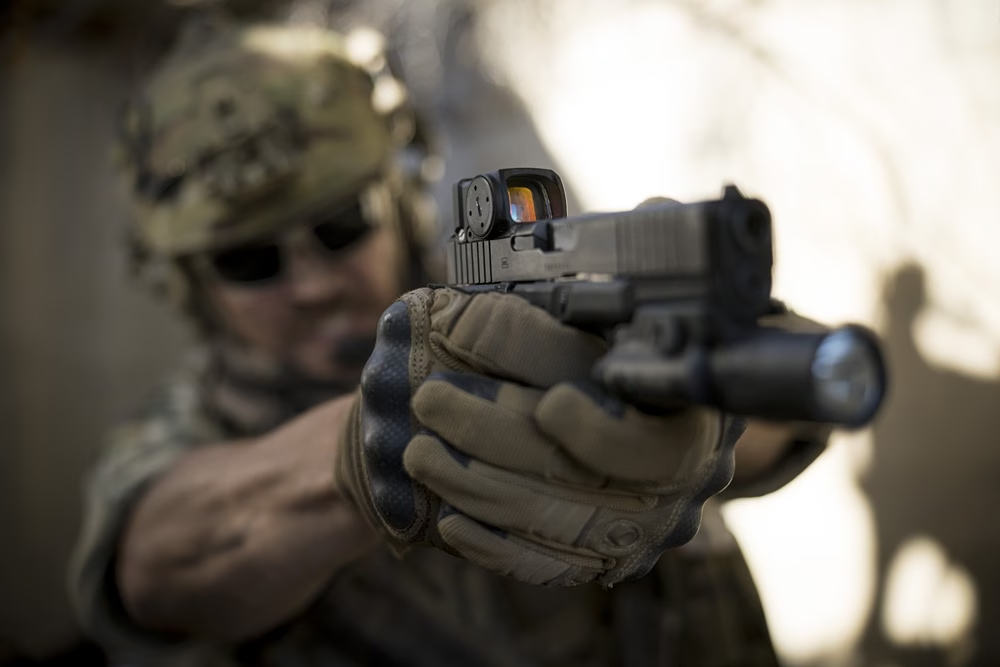
Primary Arms PLx® HTX-1™
New to the optics scene is the Primary Arms Optics PLx HTX-1, their first American-Made red dot, and the first pistol red dot sight of its kind. An enclosed pistol red dot sight, the Primary Arms HTX-1 makes use of a rugged aluminum construction that’s both water and shockproof, making it ready for any conditions you might face, whether you’re using your pistol in the field or for EDC.
Now, if you’re unfamiliar with the HTX-1, you might be thinking that it’s just another closed emitter pistol optic, but like we said above, it’s the only one of its kind. Rather than having a single mounting footprint, the HTX-1 uses a specialized modular chassis system, making it compatible with nearly every currently existing mounting footprint. Additionally, by mounting to its own chassis rather than the directly to the pistol’s slide, the HTX-1 has a naturally low centerline (the lowest of any enclosed pistol red dot sight on the market), allowing you to effectively cowitness with standard height iron sights, regardless of the pistol model you use.
Plus, the HTX-1 is also available with the renowned ACSS® Vulcan® reticle system, which is made up of both a 4-MOA center dot, as well as 240-MOA outer segmented circle that’s only visible when your aim is off-center. With it, you can quickly draw your pistol and make on-the-fly adjustments to your grip or head position to get back on target. It’s also available with just a 4-MOA dot too if you’d prefer that over the Vulcan. So, if you’re looking for a USA made red dot that’s essentially ready to mount on most pistols, the HTX-1 fits the bill.
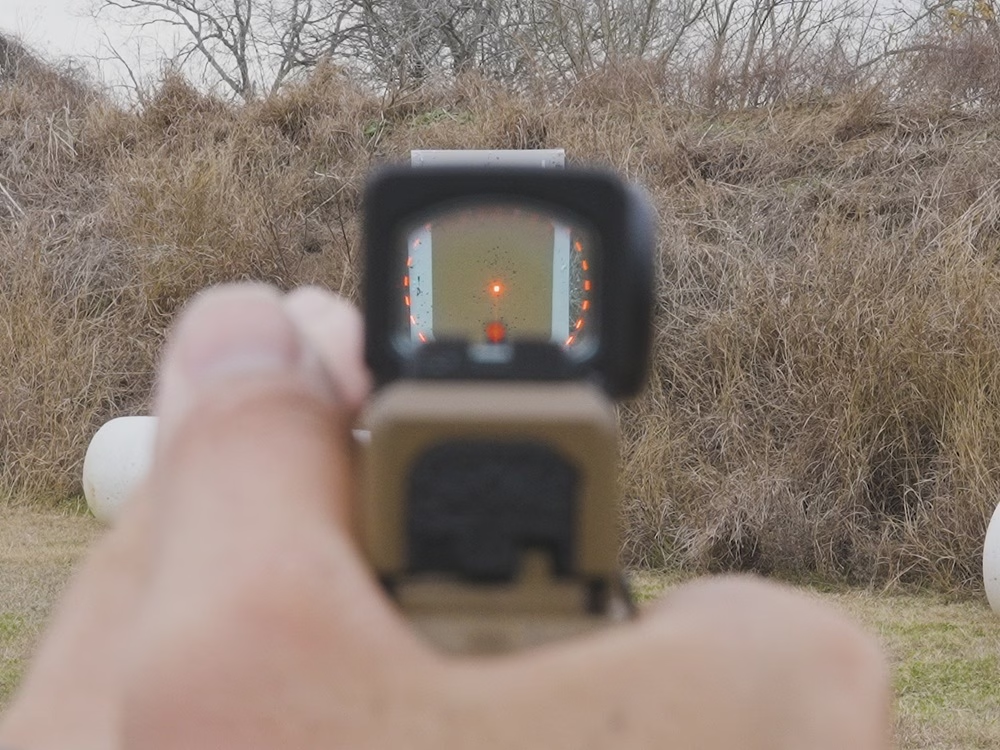
Cowitness Training
Now that you know how to achieve an effective cowitness with your stock iron sights, it’s critical to know how to effectively train with your new optic setup. The best way to train is to head to the range. So long as your optic is zeroed, you’ll want to build up reps to learn to how to properly present, aim, and fire your pistol. In doing so, you’ll build up the muscle memory necessary to use your pistol effectively across all applications.
As far as cowitness training goes, you’ll essentially be using your irons the same way you would as if you didn’t have a red dot mounted to your pistol. You should dedicate time to train with your main optic (your red dot sight), while also dedicating time to train with your irons. To train with both, try alternating between sights in between shots, focusing on adjusting your head position to maintain a proper view of your target. This will get you more comfortable with switching to your irons in the unlikely event that your optic goes down.
If you can’t head to the range each time to train, we highly recommend doing dryfire training at home. It’s a fantastic way to reinforce the fundamentals of shooting in a safe and budget-friendly manner at home. Plus, with the right tools and gear, you can greatly enhance your proficiency with a pistol by doing so. If you don’t know where to start with dry fire practice, we recommend checking out our Beginner’s Guide to Dry Fire Training to learn the basics.
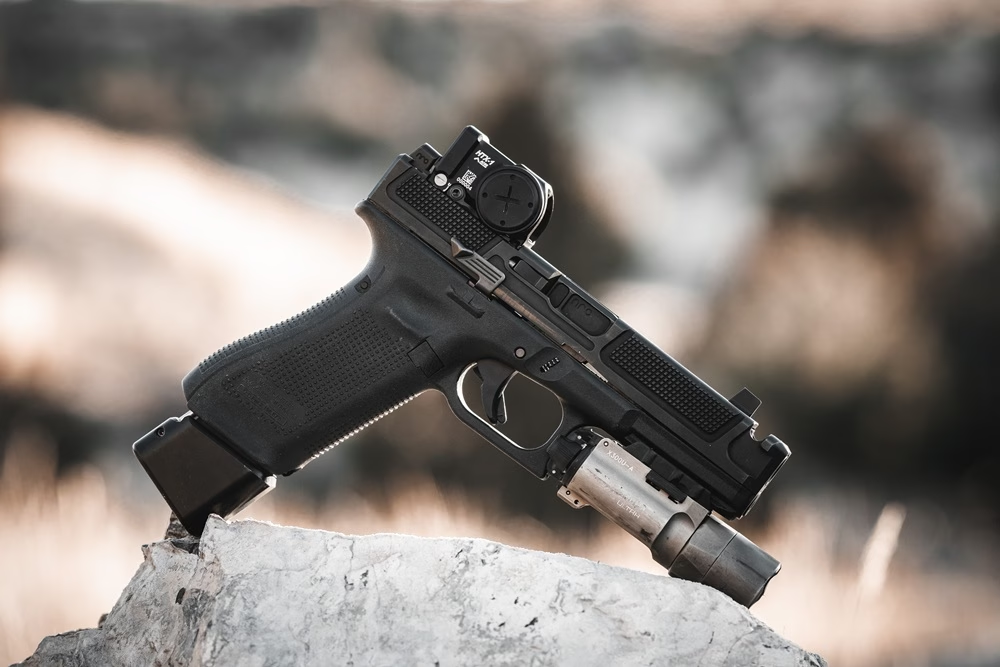
Conclusion
In the unlikely event that your optic goes down, having the ability to cowitness with your pistol’s iron sights is critical to maintaining a proper point of aim on your target. Whether you’re planning to build out your pistol for recreational, competitive, or defensive applications, we can’t stress the importance of having back-up sights enough.
While you can always opt for extra tall sights such as suppressor height sights, you don’t necessarily need to. Despite many pistols having their own proprietary mounting systems, there’s still a variety of optics designed to circumvent the need for adapter plates, albeit not many. Fortunately, with optics like the PLx HTX-1, you can easily mount your optic to just about every optic-ready pistol on the market, allowing you to effortlessly cowitness with standard height sights.
Whenever you’re setting up a pistol, consistent reliability should always be your main goal when making any upgrade to it. As such, we highly recommend opting for a sight that allows you to maintain an effective cowitness.
As far as picking out an optic to do the job, you have several to choose from, and we know that picking just one out of a sea of options can be difficult. Fortunately, our guide, “Open- vs. Closed-Emitter Red Dots” goes in-depth on the capabilities and advantages of each pistol optic type, while also providing you with some solid suggestions to help you get started in your search.
